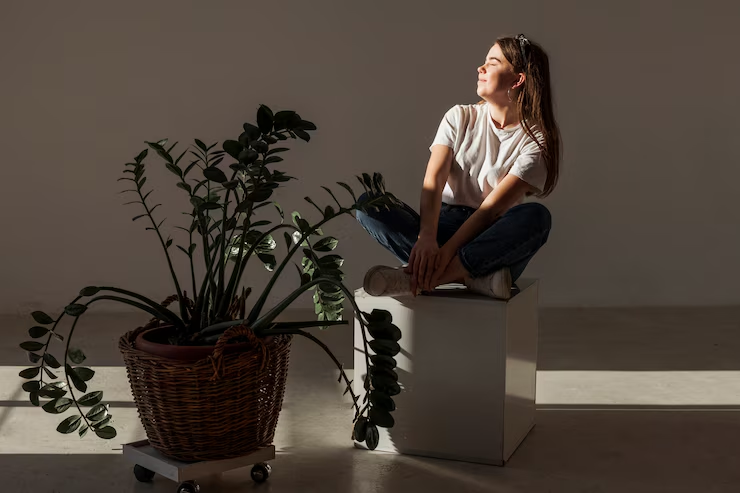Minimalism can help you live with less. You free your mind. You save time and money. You find more joy in small things. Here are the first steps to transitioning into a minimalist lifestyle.
What Is a Minimalist Lifestyle?
A minimalist lifestyle means you keep only what you need and love. You cut out the rest. You focus on what matters. You make space for calm. You spend time on things that bring you joy. You let go of clutter in your home and in your mind.
Minimalism is not about being perfect. It is about making choices. You choose items that serve a purpose. You choose habits that add value. You choose thoughts that bring peace. Over time, you learn what you really need. Then you let go of the rest.
Why Choose Minimalism?

Source: Freepik
Many people feel stress from too much stuff. They feel stuck under piles of things. They lose time looking for items. They spend money on things they do not use. They fill their minds with noise. Minimalism offers a way out.
First, minimalism saves you money. You buy less. You stop waste. You learn to fix or borrow instead of buy. Next, it gives you more time. You spend less time cleaning and organizing. You spend more time on hobbies, friends, and rest. Finally, it brings calm. You walk into a neat room. You feel peace. You find focus.
Step 1: Clarify Your Why
Before you start, ask why you want this change. Do you want less stress? More time? Less debt? More calm? Write down your main reason. Keep it where you can see it. You will refer to it when you feel stuck.
When you know your why, you make better choices. You skip items that do not fit your goal. You feel strong when you need to let go. You stay on track. You avoid buying things on a whim. You stay true to your path.
Step 2: Start Small and Simple
You do not need to clear your whole house in one day. You begin with one spot. You pick a drawer, a shelf, or a corner. You set a timer for 15 minutes. You sort items into three piles: keep, donate, toss.
Keep only items you use or love. Donate items in good shape that you no longer need. Toss broken or worn items. You feel a sense of win when you finish. You repeat the process the next day in another spot.
Step 3: Set Clear Rules
Rules help you decide fast. You might set a rule like “One in, one out.” When you buy a new item, you remove one old item. You might set a rule like “No duplicates.” You only keep one of each tool or gadget. You might set a rule like “Use it or lose it.” If you do not use an item in six months, you let it go.
Rules keep you from second guessing. You save time. You feel less stress. You make clear choices. You stick to your goal.
Step 4: Cut Digital Clutter

Source: Freepik
Minimalism is not just about stuff. It is about your mind and your screen too. You clear your phone and your computer. You delete apps you never use. You clean your desktop. You sort files into folders. You set up a simple system to find things fast.
Next, you sort your inbox. You unsubscribe from emails you never read. You delete old messages. You set up filters for new mail. You spend less time on email. You spend more time on work that matters.
Step 5: Build New Habits
Minimalism is a habit, not a one‑time project. You add small daily habits. You spend five minutes each day tidying one spot. You follow your “one in, one out” rule. You check your why every week.
You also add habits that fit your goal. If you want more calm, you add a daily walk or a short rest. If you want more time, you plan your week each Sunday. If you want less debt, you track every expense. Small habits lead to big change over time.
Step 6: Learn to Say No
A key skill in minimalism is saying no. You say no to things that do not match your why. You say no to sales you do not need. You say no to events that drain you. You say no to items that add clutter.
Saying no can feel hard at first. You practice with small things. You refuse a free gift that you will not use. You skip a meeting that does not matter. You gain confidence over time. You find space for what truly matters.
Step 7: Maintain Your Progress
After you clear space, you keep it clear. You set a monthly check‑in. You walk through each room. You sort any new clutter. You fix any messy spot right away.
You also review your why. You check if your rules still work. You adjust as needed. You grow and your needs change. You update your rules to fit your life.
Final Words
By following these first steps to transitioning into a minimalist lifestyle, you set yourself up for lasting change. You learn to value what you have. You let go of what you do not. You make space for calm, joy, and purpose. Start today. You will thank yourself tomorrow.
